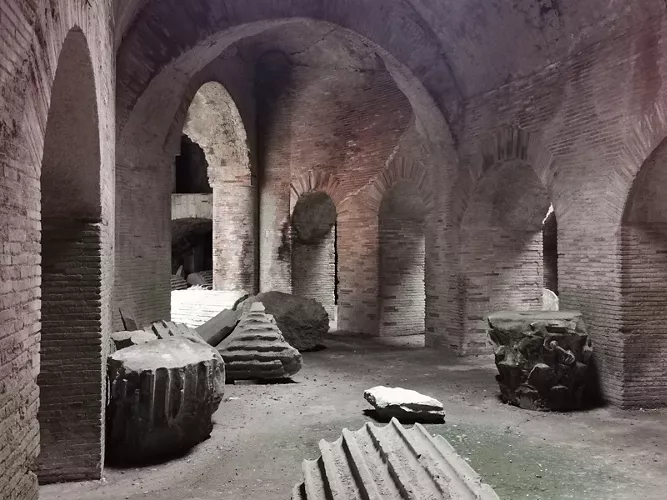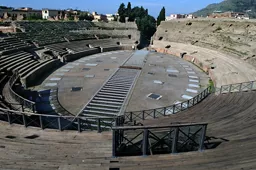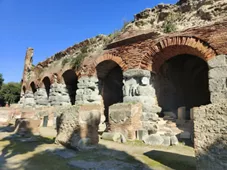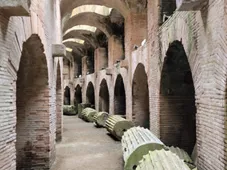This content was automatically translated. View the original text.




Overview
One of the most important testimonies of Roman times in Campania is undoubtedly theFlavian Neronian Amphitheatre in Pozzuoli, the third largest ever built after the Colosseum in Rome and the Campanian amphitheatre in Capua. Dating back to the second half of the 1st century A.D., the Amphitheatre of Pozzuoli was built during the reigns of the emperors Nero, Vespasian and Titus with the same objective as the Colosseum: to host large shows and entertain the population.
Capable of seating up to 40,000 people on three levels of tiers, the majestic amphitheatre boasted four main entrances, a large arena suitable for all kinds of performances and spacious underground areas that today, after decades of excavations, represent the best preserved part of the entire structure.
It was in the amphitheatre's basement, 7 metres below ground level, that the magic happened: through an elaborate system of gears and pulleys, animals, people and scenery could be brought to the surface, while a direct connection tothe Phlegrean aqueduct and well-designed drains made it possible to fill the structure with water and empty it with great speed.